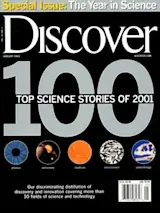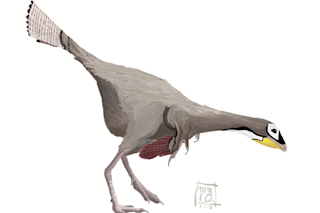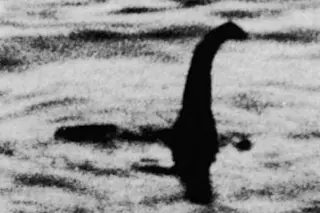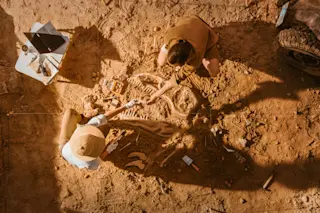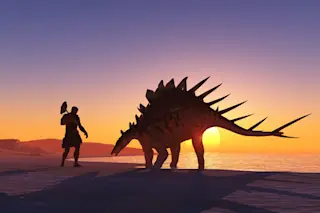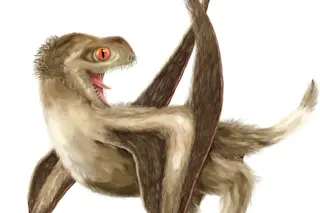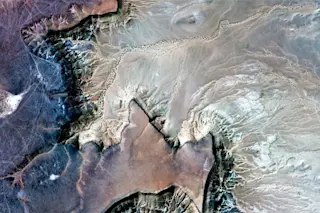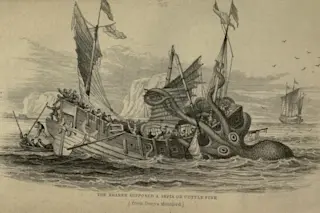Dinosaur skulls are a rare find, dinosaur embryos rarer still. But embryos of giant dinosaurs with intact skulls were unknown until now. In the middle of an ancient Argentinean nesting ground crammed with thousands of dinosaur eggs, scientists recently found six exquisitely preserved embryos, their articulated jaws, peg-shaped teeth, and even nostrils intact. The foot-long remains—still curled up inside their cantaloupe-sized eggs—offer unique insights into the early life of a group of long-necked plant-eaters called sauropods, which included the largest animals ever to walk the Earth.
Vertebrate paleontologist Luis Chiappe of the Natural History Museum of Los Angeles County, working with colleagues in Argentina, discovered the huge hatchery in 1997 at Auca Mahuevo in Patagonia. The identity of the nesting dinos remained elusive, however, until the current discovery. The contours of the embryos' skulls and the shape of their jaws and teeth quickly identified them as titanosaurs. In adulthood these ...


